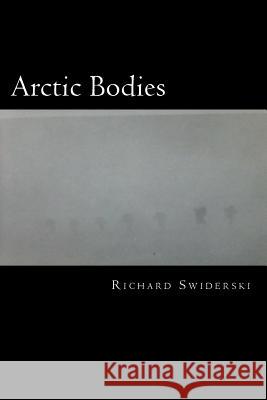Arctic Bodies: In Touch with the Cold and the Dark from Afar » książka
Arctic Bodies: In Touch with the Cold and the Dark from Afar
ISBN-13: 9781502567581 / Angielski / Miękka / 2014 / 382 str.
A moment of the human body came and passed in the late 19th -early 20th century. For the first time numbers of people from temperate climates travelled far to the north by land and sea and remained there for extended periods of time. Their purpose was to seek resources, animal, mineral and human, to exploit and to find a route that would bypass continental land masses and permit ocean trade of a world scope. The nature of the polar region was not known. It might be continuous land, clusters of islands, ice or open ocean. It might be inhabited or empty, but in any case it was enticing for the knowledge and riches exploration might bring. The body's moment came with the adjustments, physical and symbolic, that explorers made in their approach and withdrawal. The technology the explorers brought, and that brought them, to the north was insufficient to permit their survival under the conditions they entered. The technology matured over many generations by the people already resident in the higher latitudes, often grouped under the collective name "Eskimo" greatly extended the ability of the invaders to live there once arrived and before they were able to leave. Adoption and adaptation of Eskimo technology included behavioral adaptations more or less successfully completed. Travel technology permitted reaching farther north and having to remain longer than the living technology and skills would be able to sustain life for people from another climate. In the period before transport, clothing, buildings, power supplies and food packaging allowed rapid turn-arounds or longer stays explorers had to find a way to push a presence in the north sustainable for the period time they would be there. Longer times meant farther explorations placing greater demands upon the enduring body. One solution was to invent an arctic body, a cultural extension of the physical body that met the needs of a long enough northern stay. It was not entirely a conscious solution. It was not entirely a solution. An arctic body is an artifact of this moment when the influences of the Arctic imposed themselves on the autonomous bodies of Europeans and Americans. The arctic body underwent an evolution as the interests of the interlopers pressed them toward ever more northerly goals, to uninhabited shifting ice and an ocean higher in temperature than the frigid atmosphere, a magnetic and finally a geographic Pole where they were truly the first humans to arrive. The period arctic bodies were developed was a time technologies of recording and dissemination of information and impressions were growing in efficiency and availability. Newspapers and periodicals grew in length and frequency of publication, and books became more periodical-like in bearing detailed versions of newspaper stories and bringing together separate periodical pieces under the same cover for a sustained narrative. The drive for information on farther reaches of the planet in the form of maps and instrument readings that responded to standardized formats and systems of measurement was also a drive to relate the body to the land. Arctic bodies were a fabric of the changes in latitude and longitude, temperature and magnetic declinations related in series to each other from one point of travel to another. They were formed in view of the Eskimos, Chuckchi, Tlingit and other human inhabitants of the north, who in turn were contrasted with people from temperate zones in written and visual records and joined with them voluntarily or not through sharing of food, shelter, clothing, weapons and sex. Arctic bodies emerged from the vying economies of desire, ambition, fear, hatred and lust that motivated and accomplished northward movement. An array of names fixed on persons and places changed with the power of the namers to inscribe and administer them.
Zawartość książki może nie spełniać oczekiwań – reklamacje nie obejmują treści, która mogła nie być redakcyjnie ani merytorycznie opracowana.











